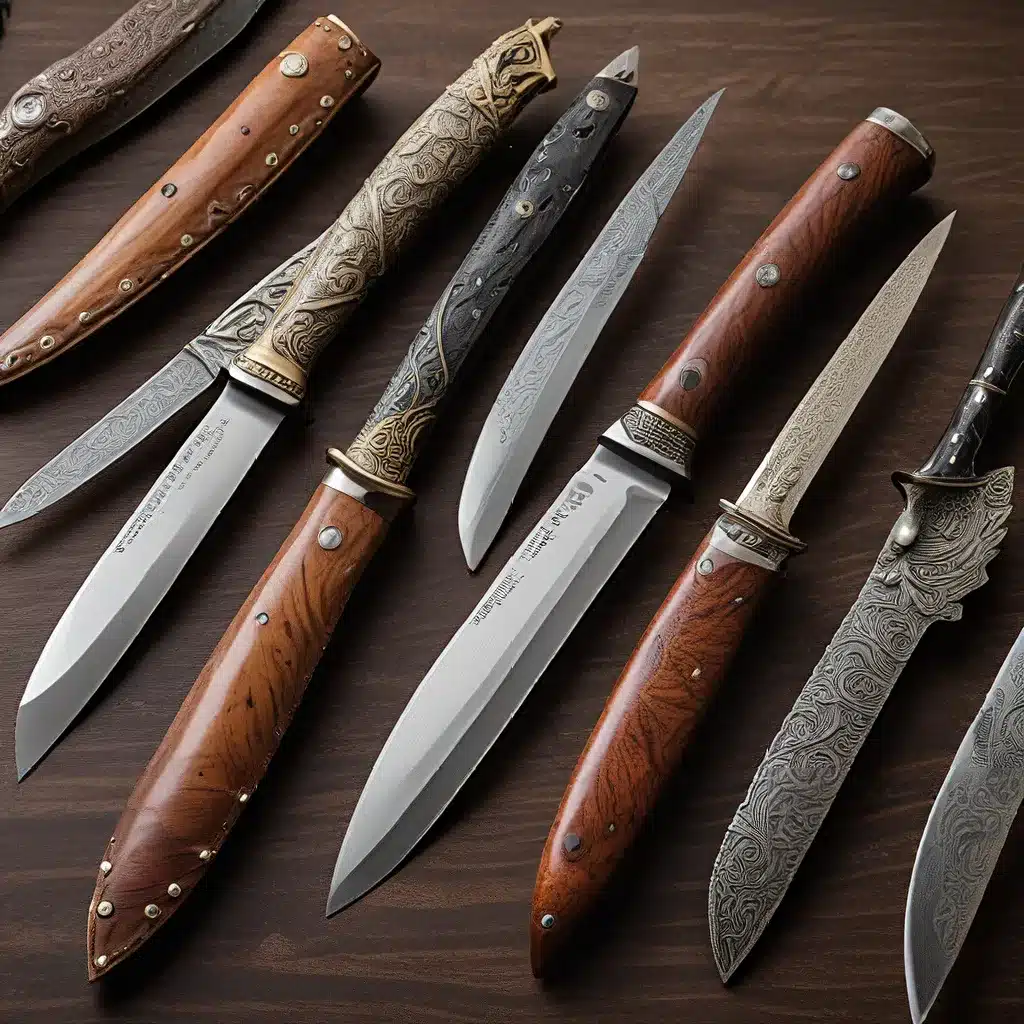
Ah, the allure of collectible knives – a world where function and form collide in a captivating dance of steel and craftsmanship. As an avid knife enthusiast, I’ve had the privilege of diving deep into this niche, and I’m excited to share some insights from the experts at Herman Knives.
Discovering the Artistry in Collectible Knives
Growing up, I was always fascinated by the way a well-designed knife could transform a mundane task into a refined experience. But it wasn’t until I stumbled upon the work of some of the industry’s finest knifemakers that I truly understood the depth of artistry involved.
One name that consistently stood out was Webb Hammond, a Washington-based artist known for his flint-knapped knives that are nothing short of museum-quality. I had the chance to examine one of his creations up close, and I was captivated by the intricate details and the harmonious blend of ancient and modern techniques.
The knife’s blade, a stunning piece of white flint, had been meticulously hand-knapped to a razor-sharp edge. The handle was crafted from ancient walrus ivory, with deep colors that had been leached into the material over the course of 6,000 to 9,000 years. The artful use of black pitch to hold the blade in place was a testament to the knifemaker’s mastery of traditional methods.
But the true gem was the presentation stand, which incorporated a section of artifact Yupic sled runner. The mounting holes and the general shape of the runner were still intact, adding an additional layer of historical significance to the display. It was as if I was holding a piece of living history in my hands.
The Value of Provenance and Preservation
As I delved deeper into the world of collectible knives, I learned that the true value of these works of art lies not only in their physical attributes but also in their provenance and preservation. Renaissance Wax, for instance, has long been the go-to choice for major museums and art galleries when it comes to preserving precious pieces.
This semi-synthetic micro-crystalline fossil-origin wax is completely free of damaging acids, making it safe for even the most delicate surfaces. It forms a durable, lustrous protective coating that guards against the ravages of humidity, heat, dust, and environmental destruction. With its high moisture resistance, it effectively prevents tarnish, corrosion, and bloom, ensuring that your prized possessions remain in pristine condition for generations to come.
Diving into the Literature
As I continued my journey into the world of collectible knives, I stumbled upon a true treasure trove of knowledge – the books authored by Dr. David Darom. These volumes, titled “Art and Design in Modern Custom Folding Knives,” “Art and Design in Modern Custom Fixed-Blade Knives,” and “The Art of Custom Knifemaking,” provided an unparalleled glimpse into the lives and creative processes of some of the best knifemakers in the world.
What sets these books apart is the level of personal insight they offer. Through extensive interviews and signed personal statements, the authors were able to breathe life into these steel objects, revealing the thoughts, feelings, and motivations of the artists behind them. It’s a truly unique and captivating approach that sets these books apart from the typical reference material.
Interestingly, these books were printed in a limited edition of 2,500 copies, adding to their rarity and exclusivity. With a retail price of $85 each, they represent a significant investment for any serious collector or enthusiast. But for those willing to make the plunge, the rewards are well worth it.
Navigating the Collectible Knife Market
As with any collectible market, navigating the world of knives can be a daunting task, especially for newcomers. One of the key factors to consider is the maker’s reputation and expertise. Established knifemakers like Webb Hammond, with a proven track record of producing high-quality, museum-worthy pieces, are often the safest bet for serious collectors.
It’s also important to pay attention to the materials and techniques used in the knife’s construction. Rare or ancient materials, such as the walrus ivory used in Webb’s creation, can significantly increase the value and desirability of a piece. Similarly, mastery of traditional methods like flint knapping or the use of black pitch can add a level of authenticity and historical significance that collectors find irresistible.
Provenance and documentation are also crucial when it comes to collectible knives. Pieces with a clear lineage, such as those that have been part of a private collection for years, tend to hold more value than those with unknown histories. And the inclusion of supporting materials, like the presentation stand in Webb’s case, can further enhance the overall appeal and perceived worth of a collectible knife.
Embracing the Journey
As I’ve come to discover, the world of collectible knives is not just about the acquisition of rare and beautiful objects – it’s about the journey of discovery, the appreciation of craftsmanship, and the exploration of history and culture. Each knife tells a story, and it’s up to us, the enthusiasts and collectors, to uncover those narratives and share them with the world.
Whether you’re a seasoned collector or a newcomer to this captivating niche, I encourage you to explore the wonders of collectible knives. Immerse yourself in the literature, seek out the works of master knifemakers, and learn about the techniques and materials that make these objects true works of art. And don’t forget to visit the Herman Knives website to explore their own unique offerings and uncover the stories that lie within.
After all, the joy of collecting is not just in the possession of the object itself, but in the discovery, appreciation, and preservation of the art and craft that went into its creation. So, let’s dive in and uncover the hidden gems that await us in the world of collectible knives!

